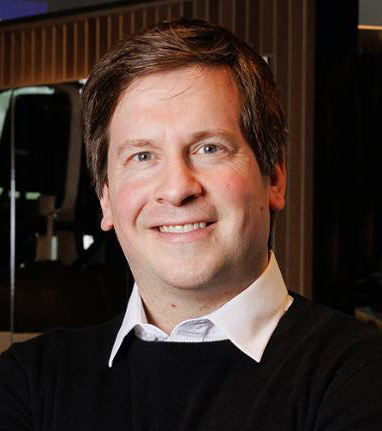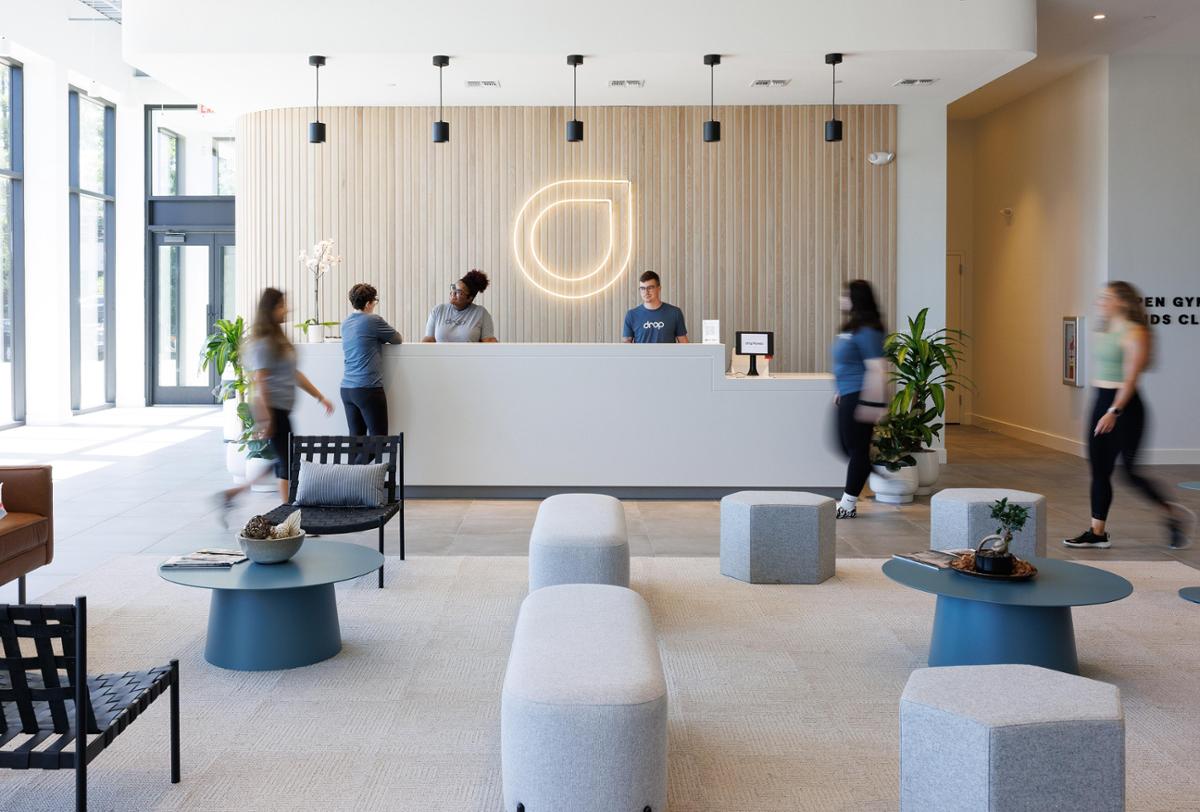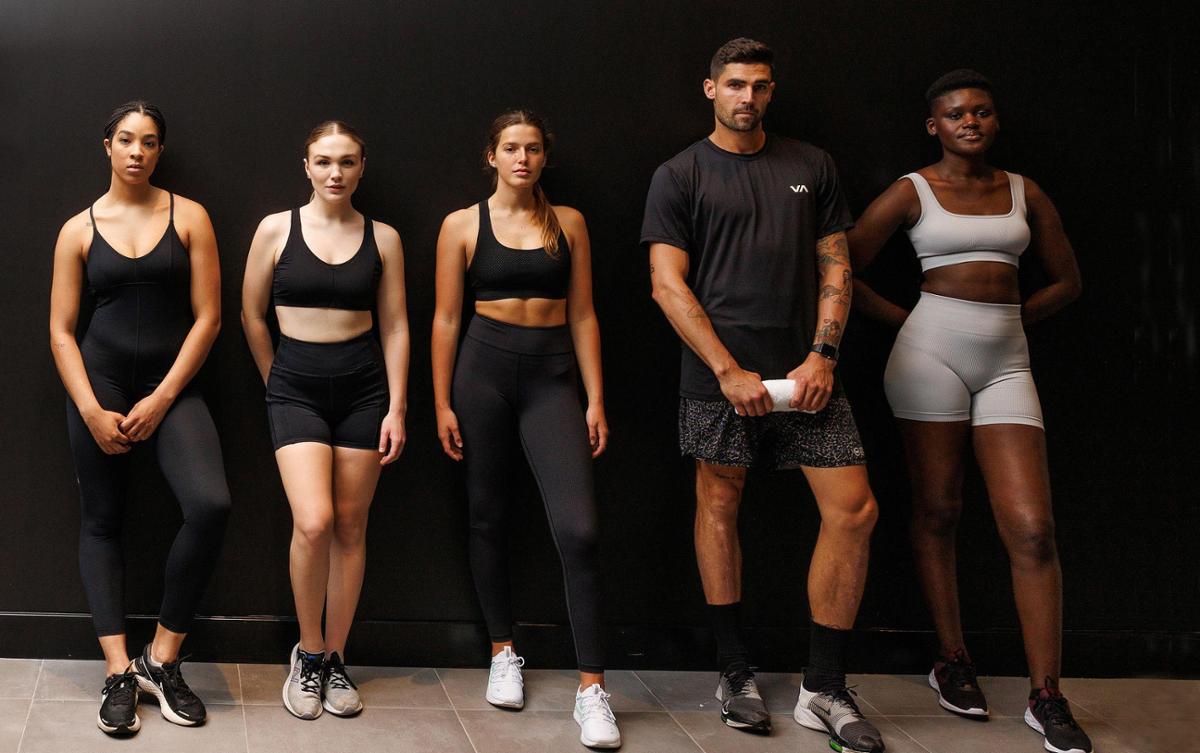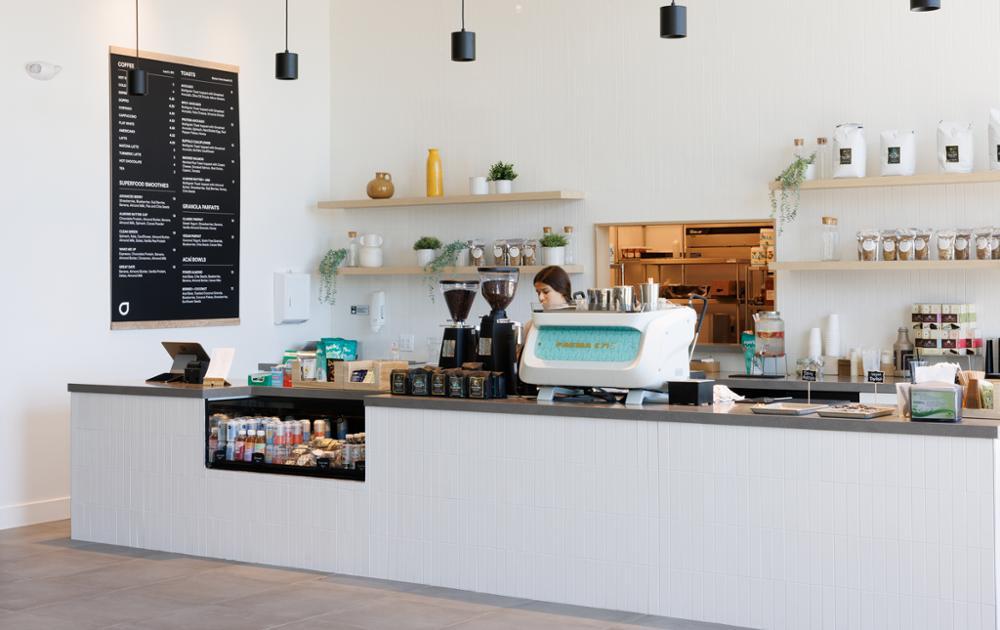see all jobs
Drop Fitness opens with a “pay for what you want, when you want” model

Drop Fitness has launched its first club – a 25,000sq ft space – in the US town of Montvale, New Jersey. It has also unveiled a “pay for what you want, when you want” membership model, which consumers can sign up for separately though the Drop Fitness app.
Overall, the club offers a range of different products: at the heart of the club is a 7,000 sq ft gym with cardio and weights, private training and a café and retailing. Both members and non-members can access the latter two elements, so only three fitness products sit behind the front desk.
In addition, there's a choice of boutique fitness offerings delivered by brand partners Fhitting Room, Physique 57, Mile High Run Club and Humming Puppy.
Pricing is currently discounted, due to opening offers, but the standard cost for gym use will be US$1,000 a year with no upfront or joining fees – day passes can also be purchased.
Classes are accessed through a monthly class subscription which includes unlimited entry to the four boutique options plus seven days’ access to the gym – for US$200 a month. Alternatively, monthly bundles of four (US$100), eight (US$150) or 10 classes (US$200) can be bought, each of which includes seven days’ gym access.
There’s also a flexible class option that lasts for 12 months (and doesn’t include gym access) starting at US$28 for one class, five for US$120 and 10 for US$180.
Personal training is between US$80 and US$100 a session, but groups can train for less, around US$70 to US$80 per person, per session.
“Drop Fitness members access multiple brands and products under one roof, enjoying all the amenities you’d find at an all-inclusive premium gym – kids’ club, café, luxury locker rooms and so on – in a space that’s designed to feel like a high-end club,” explained Jeb Balise, CEO and co-founder, in an exclusive interview with HCM. “But they have the flexibility to buy only what they want, when they want it, at the same sort of price point as they’d usually pay to access just one brand. And we give them better parking. Suddenly it’s a pretty exciting value proposition.”
Balise says members can make bookings through the app and still be a member even if they only use the café and retailing or don't come at all. “There’s no quitting process; we’re not kicking you out of our community, you don’t even have to talk to anyone,” he explained. “If you’re done for a while, you just press a button in our app and it suspends your payments. If you then get motivated again in three months’ time, we’re still there for you.”
Balise says his background in mobile gaming provided “the perfect trajectory into the fitness world”. Initially, he was a crossword puzzle enthusiast – around the time that users were flocking to Farm Ville and City Ville – and after moving some online puzzles from Facebook to mobile phones he was able to hit monthly revenues of US$2m.
“In the process, we figured out a lot of things about the mass market and the segue into fitness is that we learned a lot about what retention looks like, how to provide value on a daily basis to bring customers back, and how vitally important that is,” he said. “I was spending US$5,000 to US$10,000 a year on personal training. On top of that, I was being hit with a US$200 a month bill for membership. Charging a mandatory membership fee for the right to buy personal training seemed unnecessary and not a great way to keep a high-value customer.”
During some research, Balise found that “around 35 per cent of people quit the gym every year, with the average gym membership lasting only 14 months”. He then spent the next twelve months interrogating data and looking at a range of different models and price points.
To work out Drop Fitness’s own price models, he started by extracting cardio and weights, viewing it as a commodity they wouldn’t force customers to purchase. It became a standalone business, as did the café and retail offering. “If people wanted personal training or classes, or just wanted to come in and have something from the café, why force them to pay for cardio and weights?” he explained.
Members can sync the app with contacts in their phone allowing them to see which of their friends are booked into a class (this can be turned off for privacy), but the goal is to make it easy for people to reserve classes and to feel socially networked into the Drop Fitness community.
“We keep in touch with everyone and send out invitations to free community events, pilots of new class formats, tasting sessions at the café, and so on,” he said. “We never want to lose customers. You might not always come, but the whole point is to create a community that’s reliable, that treats all people equally and that keeps growing. We want people to trust and stay with us forever, not just for 12 or 14 months. The way we’re approaching that is to give our customers total control.”
Balise is already having conversations with banks and REITs [Real Estate Investment Trusts] about adding additional clubs. “We’re gathering qualitative and quantitative data to show what happens when you run our model and once we have that information, we’ll be in a position to roll Drop Fitness out across the US,” he said.
“I’d like to run different versions of the model, too: a 15,000 sq ft model, perhaps, and a 50,000 sq ft model. We believe the model works everywhere: we’d charge higher prices in cities to support the rents and the talent, and lower prices in less economically advantaged areas. If you can optimise utilisation and you understand human behaviour, pricing should work itself out for each market.”
More News
- News by sector (all)
- All news
- Fitness
- Personal trainer
- Sport
- Spa
- Swimming
- Hospitality
- Entertainment & Gaming
- Commercial Leisure
- Property
- Architecture
- Design
- Tourism
- Travel
- Attractions
- Theme & Water Parks
- Arts & Culture
- Heritage & Museums
- Parks & Countryside
- Sales & Marketing
- Public Sector
- Training
- People
- Executive
- Apprenticeships
- Suppliers


















































